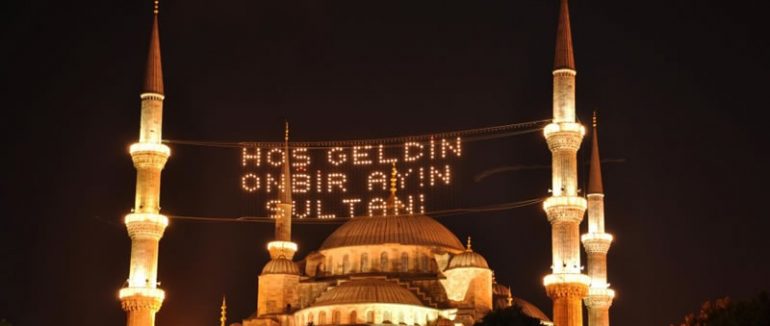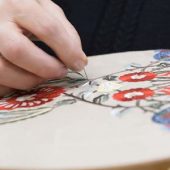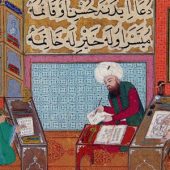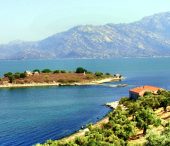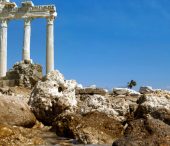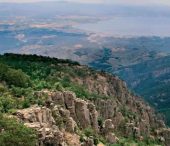The main reason why religious festivals are not celebrated on the same days every year is because they are calculated according to the lunar calendar called “kameri takvim”. Ramadan and the Feast of the Sacrifice are celebrated ten days earlier each year than the year before, so religious festivals may come to be celebrated in every season. According to the Kameri calendar, Ramadan is celebrated on the first three days of the month Sevval, and the Feast of the Sacrifice is celebrated in four days following the tenth day of the month Zilhicce. These festivals continue to exist in popular tradition, although their effects are not what they once were.
The main characteristics of Ramadan and the Feast of the Sacrifice are that people, neighbours, relatives and friends pay visits and go to see each other. Young people kiss their parents’ hands and receive best wishes and blessings from them. It is a tradition to give money or little gifts to those childreen who kiss one’s hands. Candies are served to visitors during Ramadan. That is why Ramadan is also called the “Sugar Festival”. During the Feast of the Sacrifice, not only candies but also the meat of sacrificial animal are served to guests. According to Biruni of Harezm who lived in 10th century, the reason why people serve candies during these festivals is that Cem had discovered the sweet juice inside sugar cane on a Nevruz day. In the beginning, sweet foods were only served on Nevruz, but this gradually became a general tradition which spread to all other festivals and festival days.
The Feast of the Sacrifice is celebrated with less excitement than Ramadan in Turkey. This festival takes place in Islam as a memory of the story in which a ram fell from the sky just at the moment when the Prophet Abraham was about to sacrifice his son to God.
The period between the month Sevval, in which Ramadan is celebrated, and the month Zilhicce, in which the Feast of the Sacrifice takes place lasts exactly one month and is called Aralik (meaning interval). Marrying between these two festivals is considered to be unlucky. On the first day of the Feast of the Sacrifice, hadjis sacrifice rams in Mina in Mecca. If a Muslum has the money, sacrificing is a religious obligation. Rams, camels or cattle may be sacrificed. The sacrificial animal must be healthy and if it is female, it must not be pregnant.
A number of traditions surround animal sacrificing. Some of these come from Islamic rules, while others vary from region to region and nation to nation. For example, in some regions of Turkey rams are washed, painted with henna and are dressed up with bridal ribbons. This tradition of painting rams with henna is also a very old tradition among the Jewish comunity. Dressing the animal up with different ribbons is a tradition commonly seen in some parts of Central Asia. One-third of the meat from the sacrificed animals is left in the house. The other parts are given to relatives, neighbors and the poor.
Both during Ramadan and the Feast of the Sacrifice people come together, celebrate and entertain each other. In cities and villages, children and young people in particular meet each other at festival places and have fun. Festival areas resemble fairs in these days.
The Ramadan festival comes after one month of fasting. There are also many traditions regarding the fasting month, which is known as Ramadan Month. In former times in particular, and in summer when nights are shorter, people who fasted did not sleep after dinner but waited until sahur (a meal taken just before dawn during Ramadan). In this period, people orgainised many different forms of entertainments. Karagöz and ortaoyun were examples of Ramadan shows. In rural areas, people gathered in houses and in coffee houses where wandering minstrels used to play instruments and sing. Added to these wandering minstrel songs, folk stories that could last up to a few days were recounted.

